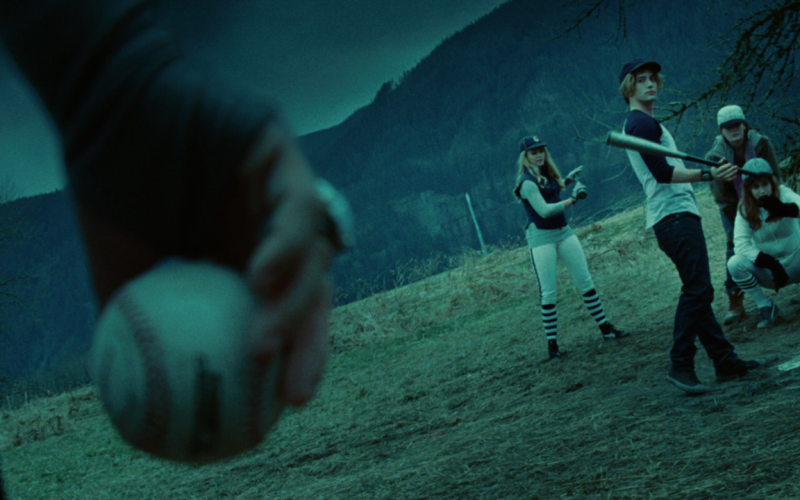Introduction
Imagine a new pattern sweeping across baseball fields: the Empty Nine Squares phenomenon. This strategy divides the playing area into nine invisible zones and intentionally leaves them unoccupied. Coaches and players are using this approach to confuse opponents, exploit weaknesses, and rethink every pitch and swing. As teams at every level adopt this game-changing tactic, fans and analysts are taking notice. In this article, we’ll explore what the vacant nine squares phenomenon is, how it began, why it works, and what it means for the future of baseball.
Origins of the Empty Nine Squares Phenomenon
The Empty Nine Squares idea started in winter league play, when a small team tested an unusual defensive setup. Rather than stationing players in traditional spots, they shifted fielders to cover specific hotspots and left one of nine equal field grids open. The result was surprising: batters struggled to find gaps, and runners hesitated to take extra bases. Word spread quickly among coaches. Soon, more teams experimented with this “vacant nine squares” layout during spring training. The tactic first gained headlines when a minor-league club used it to upset a top-ranked team. Analysts tracked the data, noting reduced batting averages and fewer stolen bases against the new alignment. From there, colleges, high schools, and even major-league spring camps began trying variations, sparking a wave of tactical innovation.
How the Nine Squares Are Defined
To apply this phenomenon, coaches imagine the outfield as a three-by-three grid. Each square covers an equal area between the foul lines and the outfield wall. The nine squares look like this on a chalk diagram:
mathematicaCopyEdit| Square 1 | Square 2 | Square 3 | | Square 4 | Square 5 | Square 6 | | Square 7 | Square 8 | Square 9 |
In a typical Empty Nine Squares setup, one of these squares remains unoccupied. Fielders then shift into the surrounding squares, packing more defense into key zones while forcing batters to target the lone open area. Which square is left empty varies depending on the batter’s tendencies, game situation, and even weather conditions. This fluid approach keeps hitters off balance, as they cannot predict the open zone until just before the pitch.
Impact on Defensive Strategy
By leaving one zone empty, teams concentrate defenders elsewhere. The benefits of this “vacant nine squares phenomenon” include:
- Surprise Factor: Hitters rarely practice facing this alignment, so they have no muscle memory for where gaps lie.
- Packing Talent: Teams can cluster faster or stronger fielders where opponents usually hit most.
- Flexibility: Shifts can adjust mid-innings or between batters based on data and scouting.
Defensive coaches now study spray charts not just for hitter hot zones, but also to decide which square to vacate. For instance, against a known pull-hitter, the open square might be on the opposite side, where few batters can reach it. The result is fewer hits in the gaps and more predictable outcomes for infielders and outfielders. Over an entire season, teams using the Empty Nine Squares method have shown measurable drops in opponent on-base percentages and extra-base hits.
Offense Responds: Rethinking Batting Tactics
As defenses adopt the Empty Nine Squares shift, hitters must find new ways to adapt:
- Bunting and Small Ball: Batters may bunt toward the empty square to exploit the gap.
- Opposite-Field Hitting: Hitters train to drive the ball into the open zone with opposite-field swings.
- Base Running Reads: Runners gauge fielders’ alignment to decide when to take the extra base.
Teams now include “vacant square drills” in batting practice. Hitters learn to spot the empty region before the pitch and adjust their stance or approach. Coaches encourage switching hitters to be ambidextrous, so they can better target different squares. In some spring camps, players use virtual reality simulations that randomize the open zone, helping them make faster decisions. These adaptations show how swiftly both sides of the ball evolve whenever a fresh defensive trend emerges.
Statistical Evidence of Success
Data analytics firms have begun tracking games using the Empty Nine Squares configuration. Early findings show:
- 10–15% Reduction in Batting Averages: Opponents batting under .300 against shifted defenses, compared to .310–.320 before the shift.
- 20% Drop in Extra-Base Hits: Doubles and triples into the outfield gaps fell significantly.
- Lower Stolen Base Rates: Runners hesitated, knowing the open square could be covered by a quick throw-in.
While sample sizes remain modest, minor-league and college teams that fully integrate the tactic see the strongest gains. Pro scouts note that players who master hitting into vacant squares become more valuable as all levels adopt the phenomenon.
Training and Implementation Challenges
Despite its promise, not every team can implement the Empty Nine Squares system overnight. Common hurdles include:
- Communication: Players must instantly know which square is vacated before each pitch. Clear signals and signs become vital.
- Athleticism Requirements: Fielders must cover larger zones flanking the empty square, so speed and range are key.
- Data Dependency: Smaller clubs with limited scouting resources struggle to collect the spray-chart data needed for smart shifts.
- Consistency: Overusing the shift can backfire if opponents adjust or find weak spots in the packed alignment.
Coaches must train extensively in outfield positioning, backup assignments, and contingency plans. Some teams hire analysts solely to map each opponent’s bat-to-ball tendencies. Others schedule special defensive sessions where they rotate the empty square in practice. Success depends on discipline and a deep understanding of each player’s strengths.
The Future of the Nine Squares Phenomenon
As more clubs at all levels embrace the Empty Nine Squares, baseball’s tactical landscape will continue to shift. Potential future developments include:
- Dynamic Shifts: Real-time analytics and AI could suggest the optimal square to vacate based on in-game telemetry.
- Rule Changes: Leagues may limit defensive shifts, as MLB previously restricted infield alignments to preserve traditional play. Similar rules could apply to the Empty Nine Squares tactic if it skews offense too far.
- Positionless Players: Outfielders and infielders might train in hybrid roles, ready to cover multiple squares per inning.
- Fan Engagement: Broadcasts may add graphics to show live nine-square overlays, helping fans understand the strategy.
Baseball purists and modernists will debate the merits of such shifts. Yet the Empty Nine Squares phenomenon clearly demonstrates how data and creativity drive evolution in America’s pastime.
Case Study: A College Championship Run
Last season, a Division I college team made headlines by using the Empty Nine Squares strategy in its conference tournament. Facing four elite hitters, the coach left different squares empty based on in-depth video analysis. The result: a combined batting average of .198 for those batters, compared to their usual .325. The team won the title and earned national attention. Interviewed after the game, the coach emphasized rigorous practice, player buy-in, and a willingness to rethink long-held defensive norms.
Balancing Tradition and Innovation
Baseball is a game of deep tradition. Many fans love the classic “left fielder, center fielder, right fielder” look. Yet each generation of managers seeks an edge. The Empty Nine Squares phenomenon sits at this crossroads. It honors the sport’s roots—position players still cover the outfield—but adds a modern twist. By blending statistical insight with flexible positioning, teams can respect history while pursuing new levels of success. How pitchers, hitters, and fans respond to these changes will shape baseball’s next era.
Conclusion
The Empty Nine Squares phenomenon is more than a trend. It’s a shift in how teams view space, movement, and matchup data. From its humble start in winter leagues to its presence in major spring camps, this tactic challenges players to rethink defense and offense alike. Coaches use nine-square grids to pack defense where hitters usually attack, leaving a single zone empty. Hitters learn new skills to exploit gaps, and analysts gather data to keep one step ahead. As the tactic spreads, rule makers, trainers, and fans will debate its place in baseball’s future. One thing is clear: the field has become a chessboard of invisible squares—and mastering those empties may define the game’s next champions.










